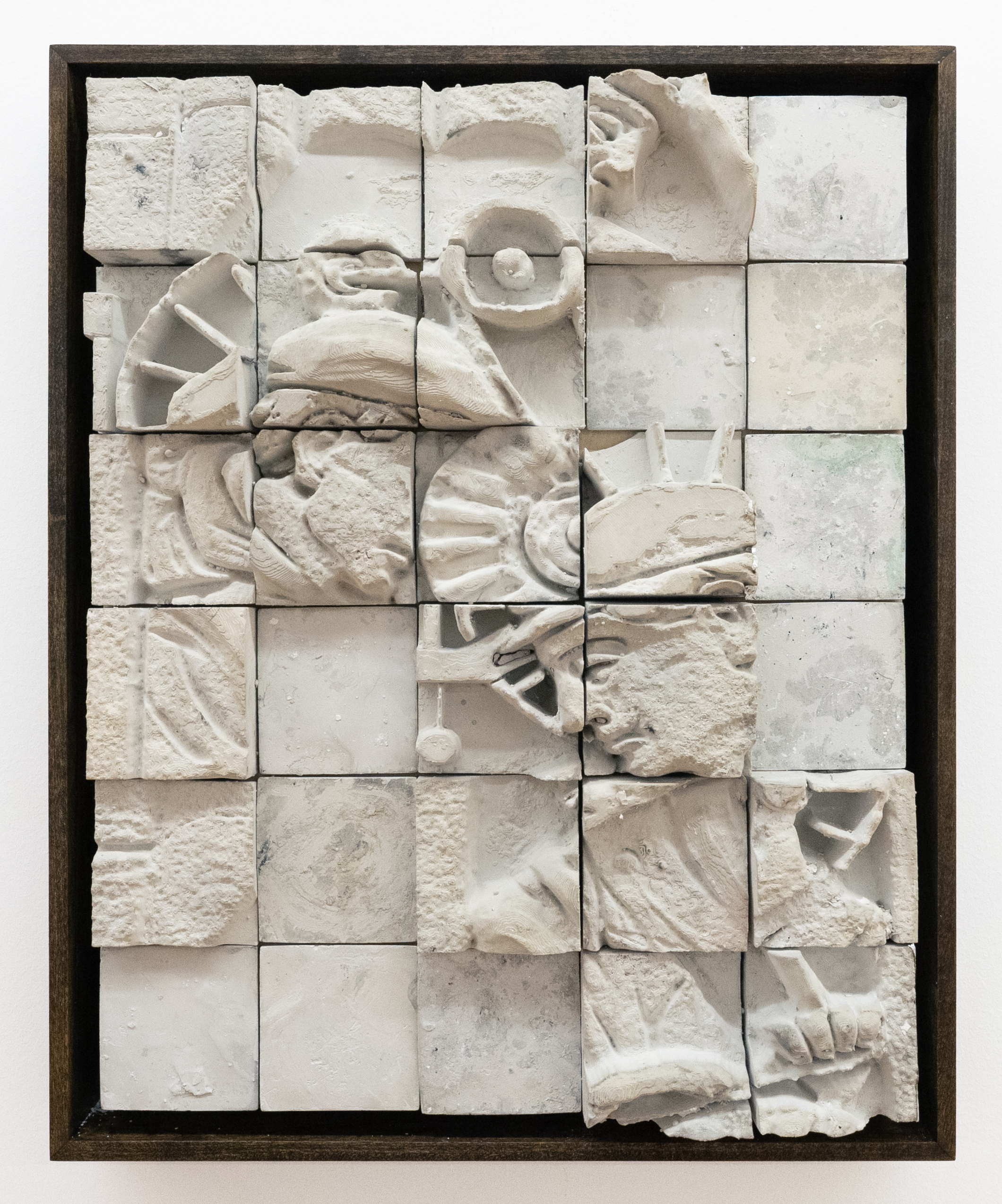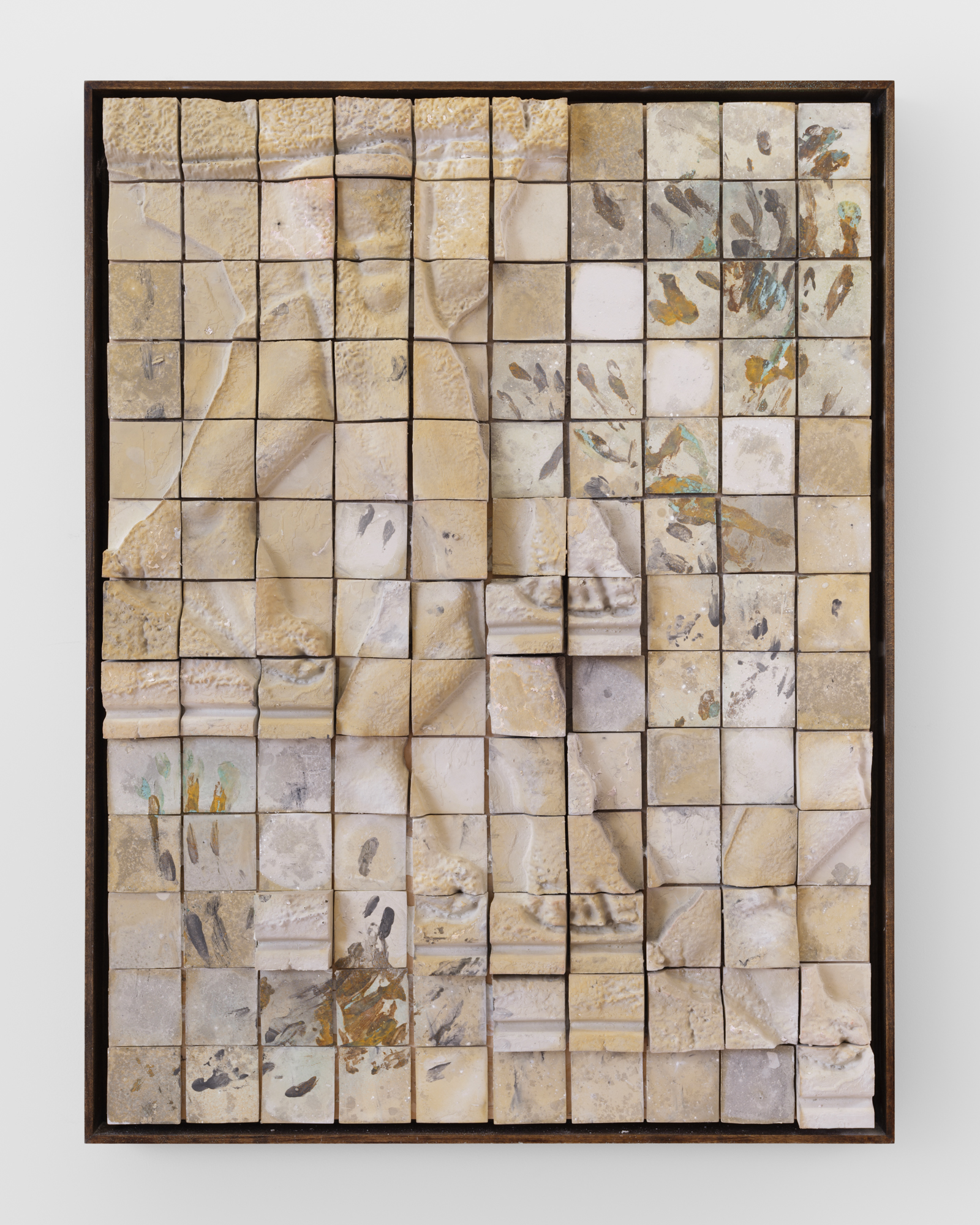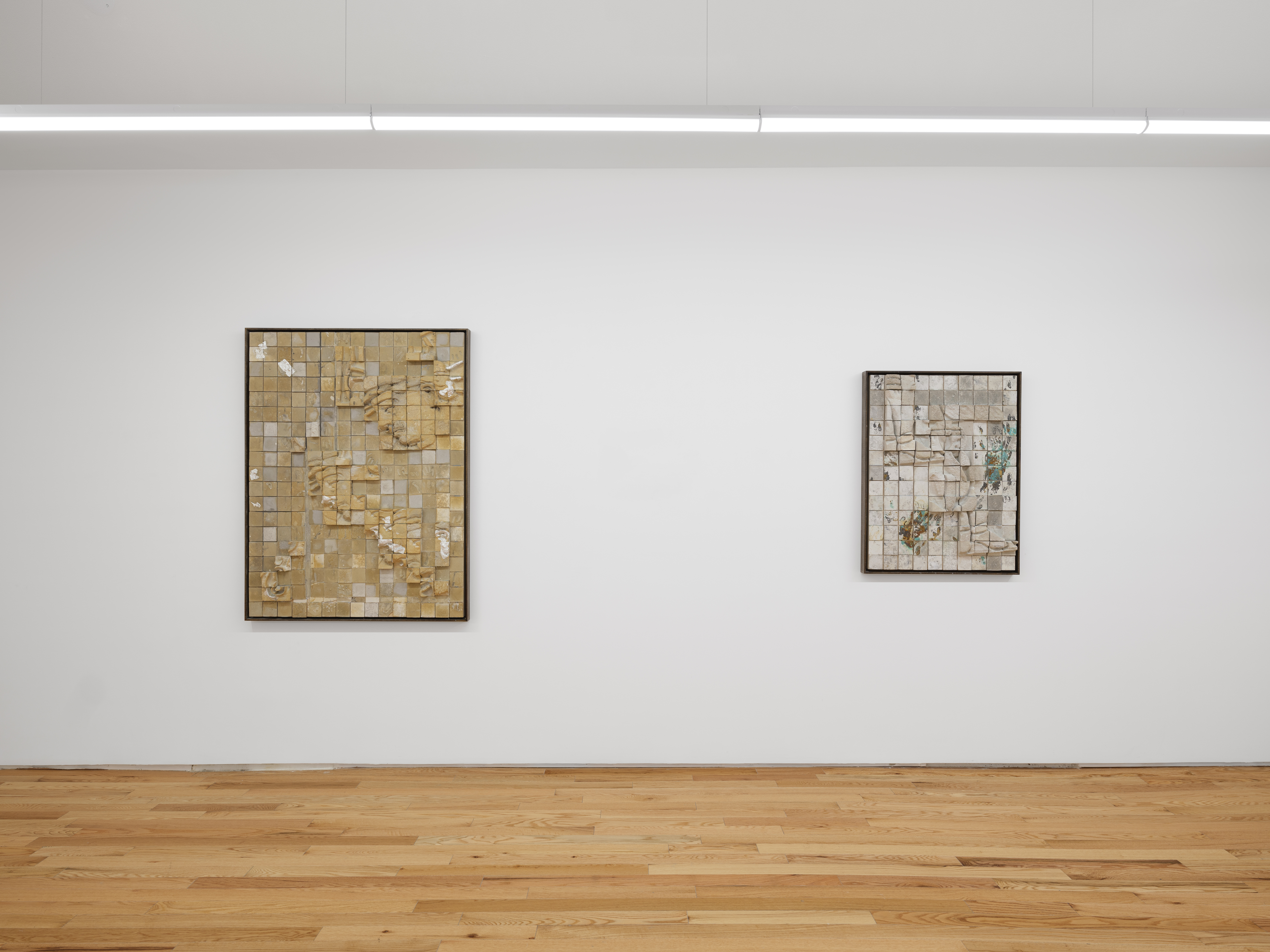formerly: Rubber Factory
full archive here
full archive here
Hundreds do things with movement, pattern, and concept; hundreds street out a scene, hold up a world’s jelling, and register change, which is not the antithesis of chains.
-Lauren Berlant and Kathleen Stewart, “Hundreds do things”
island Gallery is pleased to present Hundreds Do Things, the début solo show by New York-based artist Adriana Furlong. The ten wall-hanging pieces of the exhibition continue Furlong’s reconstruction of urban historical trace, particularly, the trace of the aurae left behind by the artisans who crafted the façades of New York City. The works all share a similar material trajectory that moves from photographing to modeling, 3d printing to molding to casting into concrete. Each step compounds the opportunity for the viewer to reflect on the material, and materially human, natures of our cities.
Furlong’s title comes from one of the “hundreds” written by Lauren Berlant and Kathleen Stewart. The two affect theorists wrote collaboratively within the constraint of pieces that were literally hundreds (multiples of 100) words long. At first, Furlong’s work may seem similarly constrained; her nearly seven square inch cast concrete blocks are arranged into grids of different sizes, suggesting a prefabricated structure. But as with the hundreds, instead, Furlong asks the viewer to see the edges as pathways, to see how she arranges the various blocks to break up faces, feet, hands.
The bodies are not fragmented. They are entangled. They are recombined and brought into dialogue through Furlong’s spare use of gestural elements including copper powder and pieces of foil, reminiscent of the floors of subway stations. The blocks are pressed together and perturb. They are in contact and, as the artist can be with the viewer, in communion. Furlong samples from the source material and lifts the artisans in an act of memorializing, decoding the city’s history, and returning through a digital detour to the lithic foundations of our built environment. The result can summon a slowing feeling accompanying the onset of defamiliarization, as the viewer wonders if the textures of the pieces come from the material or the inability of the digital world to represent analog contiguity. Perhaps these bumps are pixels converted to stone, revealing the limitations of Furlong’s interstitial moves with fused deposition modeling.
In addition to asking us to consider the lives of the people who literally built our cities, whose gentle touch remains faintly audible to attentive eyes, Furlong, with her compositions, prompts us to imagine an intimacy with these memories and histories. Her faces, when we see them, face down, being at the same time an artisan focused on their craft or a person modeling forlornness. The cheekily titled “i cant quit you” bears witness to an unspeakable intimacy between the two faces, ready to bury tears in each other’s shoulders, tears falling on girder beams or into slow-churning pools of wet concrete. In contrast, the three faces of “planer” gaze, adoringly, in concert upon a small spiral, perhaps the product of their labor or perhaps an eddy of optimism, like so many magi.
Stewart, reading Berlant, writes about “ordinary affects,” public feelings that also furnish our intimate lives that “pick up density and texture as they move through bodies, dreams, dramas, and social worldings of all kinds.” In reconfiguring moments of workers building their own memorials as public intimacies, Furlong echoes the exhaustions we feel from all of our connections, from what Berlant calls the “inconvenience of other people” that shakes our fantasies of sovereignty and control. With touch, with the gaze downward, with the steps over and through one of the best known urban grids in the world, Furlong invites us to be compositional, to get closer.
Adriana Furlong (b. 1998, Berkeley, CA) is a visual artist and writer based in New York City. She works between vernacular and notational history to excavate those residual memories, bodies, and narratives that have been forgotten, lost, and buried. Furlong’s work has been included in several group exhibitions in New York, most recently “Ideal Acre” at Island Gallery. Her work has been reviewed by The Coastal Post, Musee Magazine, and Teeth Magazine. She is a regular contributor to The Brooklyn Rail among other publications.
-Lauren Berlant and Kathleen Stewart, “Hundreds do things”
island Gallery is pleased to present Hundreds Do Things, the début solo show by New York-based artist Adriana Furlong. The ten wall-hanging pieces of the exhibition continue Furlong’s reconstruction of urban historical trace, particularly, the trace of the aurae left behind by the artisans who crafted the façades of New York City. The works all share a similar material trajectory that moves from photographing to modeling, 3d printing to molding to casting into concrete. Each step compounds the opportunity for the viewer to reflect on the material, and materially human, natures of our cities.
Furlong’s title comes from one of the “hundreds” written by Lauren Berlant and Kathleen Stewart. The two affect theorists wrote collaboratively within the constraint of pieces that were literally hundreds (multiples of 100) words long. At first, Furlong’s work may seem similarly constrained; her nearly seven square inch cast concrete blocks are arranged into grids of different sizes, suggesting a prefabricated structure. But as with the hundreds, instead, Furlong asks the viewer to see the edges as pathways, to see how she arranges the various blocks to break up faces, feet, hands.
The bodies are not fragmented. They are entangled. They are recombined and brought into dialogue through Furlong’s spare use of gestural elements including copper powder and pieces of foil, reminiscent of the floors of subway stations. The blocks are pressed together and perturb. They are in contact and, as the artist can be with the viewer, in communion. Furlong samples from the source material and lifts the artisans in an act of memorializing, decoding the city’s history, and returning through a digital detour to the lithic foundations of our built environment. The result can summon a slowing feeling accompanying the onset of defamiliarization, as the viewer wonders if the textures of the pieces come from the material or the inability of the digital world to represent analog contiguity. Perhaps these bumps are pixels converted to stone, revealing the limitations of Furlong’s interstitial moves with fused deposition modeling.
In addition to asking us to consider the lives of the people who literally built our cities, whose gentle touch remains faintly audible to attentive eyes, Furlong, with her compositions, prompts us to imagine an intimacy with these memories and histories. Her faces, when we see them, face down, being at the same time an artisan focused on their craft or a person modeling forlornness. The cheekily titled “i cant quit you” bears witness to an unspeakable intimacy between the two faces, ready to bury tears in each other’s shoulders, tears falling on girder beams or into slow-churning pools of wet concrete. In contrast, the three faces of “planer” gaze, adoringly, in concert upon a small spiral, perhaps the product of their labor or perhaps an eddy of optimism, like so many magi.
Stewart, reading Berlant, writes about “ordinary affects,” public feelings that also furnish our intimate lives that “pick up density and texture as they move through bodies, dreams, dramas, and social worldings of all kinds.” In reconfiguring moments of workers building their own memorials as public intimacies, Furlong echoes the exhaustions we feel from all of our connections, from what Berlant calls the “inconvenience of other people” that shakes our fantasies of sovereignty and control. With touch, with the gaze downward, with the steps over and through one of the best known urban grids in the world, Furlong invites us to be compositional, to get closer.
Adriana Furlong (b. 1998, Berkeley, CA) is a visual artist and writer based in New York City. She works between vernacular and notational history to excavate those residual memories, bodies, and narratives that have been forgotten, lost, and buried. Furlong’s work has been included in several group exhibitions in New York, most recently “Ideal Acre” at Island Gallery. Her work has been reviewed by The Coastal Post, Musee Magazine, and Teeth Magazine. She is a regular contributor to The Brooklyn Rail among other publications.














